Creation Science vs Evolution | Biblical Worldview and Gospel Outreach | Multilingual Worldwide Radio MinistryTue, 26 Mar 2024 18:14:55 +0000en-US
hourly
1 https://wordpress.org/?v=5.4.15
Thu, 25 Apr 2024 02:00:42 +0000https://creationmoment.wpengine.com/sermons/your-bodys-100000-sentries/Despite the fact that most microorganisms are necessary and good, throughout our lifetimes each of us encounters tens of thousands of different infectious bacteria, viruses, fungi and parasites.
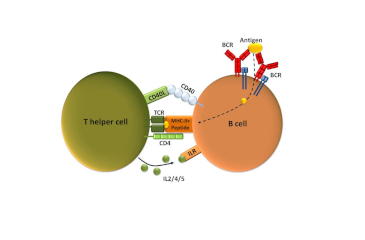 Even more remarkable is the fact that most of the time our immune systems disable these potentially lethal invaders before we ever show any symptoms of infection. At any given time, more than 100,000 unique sentries posted throughout your body identify invaders, sound the alarm, and even issue specific chemical instructions for their destruction. These sentries may also be thought of as tiny doctors who identify a potential illness, discover the cure and apply it even before the infection gets underway.
Even more remarkable is the fact that most of the time our immune systems disable these potentially lethal invaders before we ever show any symptoms of infection. At any given time, more than 100,000 unique sentries posted throughout your body identify invaders, sound the alarm, and even issue specific chemical instructions for their destruction. These sentries may also be thought of as tiny doctors who identify a potential illness, discover the cure and apply it even before the infection gets underway.
The immune system has puzzled scientists. Researchers know that our bodies do not keep a set of genetic blueprints for these sentries, which are called B cells. How then does our body make these sentries or develop the genetic information necessary to disable invaders? Researchers have learned that the body has a small library of DNA fragments that are continually being shuffled into new patterns so that the body is almost instantly ready for any invader.
The fact that even medical researchers are in awe over the design of our immune system verifies what the Bible says: “I am fearfully and wonderfully made.”
Prayer: I thank You, Father, that I am fearfully and wonderfully made. Help me to take care of the temple of my body, which You have given me so that I may be a fit and able instrument for You in this world. In Jesus’ Name. Amen.
Ref: “MIT researchers isolate masterbuilder’ diseasefighting gene.” Minneapolis StarTribune, Dec. 22, 1989. p. 2. Image: T-cell dependent b-cell activation, showing TH2-cell (left) B-cell (right) and several interaction molecules. (PD)
© 2024 Creation Moments. All rights reserved.
]]>
Thu, 25 Apr 2024 01:30:08 +0000https://creationmoment.wpengine.com/sermons/qu-fue-el-monstruo-de-troya/I Corintios 12:2
“Sabéis que cuando erais gentiles se os extraviaba llevándoos, como se os llevaba, a los ídolos mudos”.
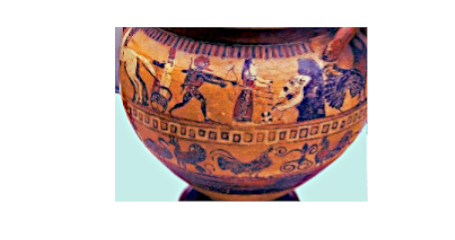
Mientras que la palabra “fósil” es un término moderno, las personas hace miles de años pueden haber conocido acerca de los fósiles. Si ese era el caso, ellos no sabían lo que eran fósiles. Esa es la nueva teoría propuesta de un grupo que incluye algunos folkloristas y paleontólogos. Su teoría se basa en las figuras pintadas sobre una vasija corintia de 2.500 años.
La vasija colorida fue hecha alrededor del año 550 AC. Llamada la vasija Hesione, muestra a la mujer mítica Hesione siendo rescatada del monstruo de Troya por el héroe griego Heracles. Sólo la cabeza del monstruo se ve saliendo de la cueva. La cabeza se parece mucho a un cráneo gigante con una lengua y el ojo como de lagartija saliendo de la cueva. Aquellos tras la nueva teoría concluyen que estos detalles fueron añadidos a lo que era en realidad un fósil muy común en esa área. El monstruo evidentemente era percibido como una serpiente de mar. Sin embargo, los paleontólogos dicen que el área alrededor del Mar Egeo y Turquía occidental contiene muchos fósiles de grandes jirafas, camellos y caballos. A veces estos fósiles eran expuestos por el clima de las laderas rocosas. Cuando los griegos antiguos encontraron estos grandes fósiles, pensaron que eran los huesos de dioses y monstruos.
Mientras que esto nos puede parecer supersticioso hoy, debemos tener cuidado. La gran superstición de hoy es que la vida evolucionó de materia no viva a lo largo de millones de años. La creencia en la evolución no es menos que un intento por evadir reconocer a nuestro Dios Creador por sobre las leyendas de los dioses griegos antiguos. San Pablo mismo escribió que el poder eterno y naturaleza divina de Dios están evidentes a través de la creación.
Oración: Amado Padre, Te agradezco por la luz de Tu Palabra. Amén.
Notas: Science News, 26/2/00, p. 133, “Vase muestra que los antiguos también excavaron fósiles”. Foto: Jarrón Hesione de U. Knon CC By SA 3.0
© Momentos de la Creación 2024. Todos los derechos reservados.
]]>
Wed, 24 Apr 2024 02:00:24 +0000https://creationmoment.wpengine.com/sermons/a-journey-through-inner-space/What would the typical living cell look like if enlarged to the size of New York City? Let’s take an imaginary journey through the cell.
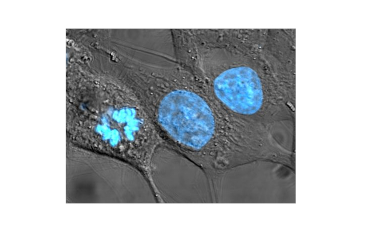
As we approach the giant cell in our special ship, we would see breathtaking beauty, order and busyness within the cell. On the surface of the cell we see millions of openings stretching as far as the eye can see. Each one independently opens and closes, allowing materials to enter or leave the cell.
As we enter one of these vast portholes, we see an endless array of hallways leading in all directions. Some of these hallways lead to the cell’s memory banks in the nucleus. There, all the activities we are about to see are not only regulated but also checked by very fussy quality controllers. Other halls lead to giant processing plants, while still others lead to assembly plants within the cell. If we move along a giant hallway to one of these assembly plants, we will see marvelous organization. Raw materials, like those we saw entering the cell, are sent here for assembly. Robot like structures – really proteins – are working on the assembly line while other proteins, called enzymes, are supervising their work.
This view of the cell, provided by modern science, makes it even more difficult to believe that the cell, or any life, could have arisen from chance collisions of atoms. It is for this reason that several famous evolutionists have given up on the idea that chance and accident could have created life!
Matthew 6:25
“Therefore I say unto you, Take no thought for your life, what ye shall eat, or what ye shall drink; nor yet for your body, what ye shall put on. Is not the life more than meat, and the body than raiment?”
Prayer: Lord Jesus, I marvel at how You, the Instrument who created the living cell, became a living being Yourself for my salvation. Though I cannot understand such love, help me to never take Your gift of salvation for granted. Amen.
Notes: Image: HeLa cells stained with Hoechst (PD)
© 2024 Creation Moments. All rights reserved.
]]>
Wed, 24 Apr 2024 01:30:44 +0000https://creationmoment.wpengine.com/sermons/sabe-usted-cuan-compleja-es-una-sola-clula/Salmos 96:3
“…proclamad entre las naciones su gloria, en todos los pueblos sus maravillas…”
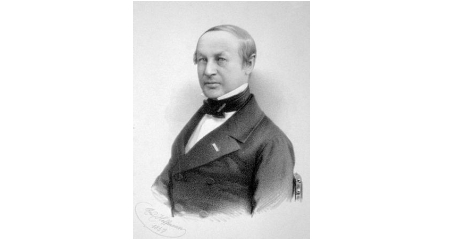
No fue sino hasta 1839 que la teoría de las células fue descrita por primera vez por Theodore Swhwann en básicamente su forma moderna. Para 1858, el investigador Rudolf Virchow había aprendido suficiente acerca de la célula para concluir que toda célula debe venir de una célula preexistente. Pero Charles Darwin no puso atención. El año siguiente publicó un libro, Sobre el origen de las especies, que teorizaba que la primera célula se formó de una materia no viviente.
En los días de Darwin, se creía que la célula sólo era un simple saco lleno de carbón gelatinoso. Este concepto es el origen del término protoplasma. Sin embargo, casi 150 años de investigación celular nos han demostrado que inclusive las células de los protozoos y hongos son inmensamente complejas. Hoy sabemos que incluso las más simples de estas células, eucariotas, tienen un estimado de 100.000 partes. Muchos miles de operaciones diferentes están dándose continuamente dentro de cada una de las partes de la célula, llamado orgánulos. Además, la célula no puede vivir hasta que todas estas partes estén funcionando apropiadamente. Incluso la simple bacteria E. coli tiene 4.000 genes. ¡Si pudiéramos agrandar el ADN del E. coli hasta el espesor de un alambre de colgar ropa, sería de cinco millas (8 Km.) de largo!
No hay tal cosa como una “célula simple”. El hecho que una célula no pueda vivir sin todas estas miles de partes muestra que las células fueron creadas en su forma terminada, tal como lo dice la Biblia. ¡Incluso las bacterias declaran la gloria de nuestro Creador!
Oración: Señor, Te glorifico, ya que incluso la célula más simple testifica de Tú gloria. Amén.
Notas: CRSQ, 3/99, p. 228, “La evolución putativa de la ultraestructura de la célula eucariota animal”. Foto: Theodor Schwann, 1810-1882. (PD)
© Momentos de la Creación 2024. Todos los derechos reservados.
]]>
Tue, 23 Apr 2024 02:00:39 +0000https://creationmoment.wpengine.com/sermons/how-does-the-nose-work/Some things don’t have to be understood to be appreciated. You can enjoy the smell of dinner cooking or the scent of a rose without any idea of how your nose works. And believe it or not, you’re doing just as well as the most brilliant biologist.

While your nose knows how it works, science cannot explain just how we sense scents. It is known that inside our noses, behind the bridge of the nose, are cells that can sense smell. These cells are able to detect and identify airborne molecules from an open rose or a cooking roast. But no one knows just how these cells turn those molecules into the sense of smell that we experience.
To make matters more complicated, the sense of smell is one of our most complex senses. A single seemingly simple odor may contain more than 1,000 different chemicals. One sniff is likely to start activity all over the brain. Scientists have proven what experience has already shown most of us – a smell can also trigger emotions and memories, depending on an experience related to that smell. In addition, your sense of smell is linked to your sense of taste, which is why food can seem to be tasteless when you have a head cold.
A sense of smell has saved countless lives and brought joy and pleasure to all but those few whose sense of smell has malfunctioned. It is so complex that modern science doesn’t know how it works – yet another testimony to the wisdom of our loving Creator.
Genesis 27:27
“And he came near, and kissed him: and he smelled the smell of his raiment, and blessed him, and said, See, the smell of my son [is] as the smell of a field which the LORD hath blessed…”
Prayer:
Father, I thank You for the sensation of smell and the help and pleasure it gives me. Indeed, everything You have given to me glorifies You in all things. In Jesus’ Name. Amen.
Notes:
Reyneri, Adriana. 1984. “The nose knows, but science doesn’t.” Science 84, September. p. 26. Notes: Image: HeLa cells stained with Hoechst (PD)
© 2024 Creation Moments. All rights reserved.
]]>
Tue, 23 Apr 2024 01:30:30 +0000https://creationmoment.wpengine.com/sermons/su-ojo-multipropsito/Salmos 94:9
“El que hizo el oído, ¿no oirá? El que formó el ojo, ¿no verá?”
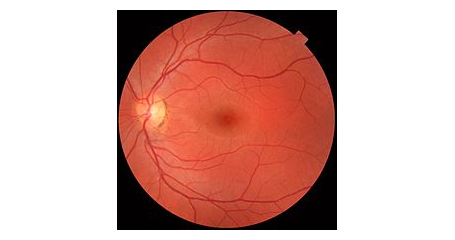
Los científicos han aprendido que el ojo es un órgano multipropósito. Por mucho tiempo han intentado entender cómo nuestro reloj biológico está ajustado. Este reloj sorprendente está localizado en el cerebro y sigue un periodo de casi un día exacto. Controla mucho de los ritmos del cuerpo, así que es importante que esté apropiadamente ajustado.
Los científicos si saben que el reloj se ajusta por la luz. También saben que su reloj no se ajusta por los bastones y conos en su ojo que ven el color y las imágenes. Ellos habían demostrado contundentemente que los bastones y conos no tienen nada que ver con ajustar el reloj. Recientemente, los investigadores criaron ratones cuyos ojos no tenían ni bastones ni conos. Al trasladar los periodos de luz, los ratones todavía ajustaron sus relojes biológicos al de los nuevos periodos. Ahora los investigadores están convencidos que han encontrado como nuestros ojos ajustan nuestro reloj biológico luego de estudiar, de todas las cosas, al sapo africano cornudo. Al estudiar al sapo, los científicos descubrieron un fotorreceptor llamado melanopsina. Este fotorreceptor se encuentra el la piel, ojos y cerebro del sapo. Ellos entonces decidieron comprobar su la melanopsina en nuestros ojos. Descubrieron que una forma del fotorreceptor se produce en la parte interna de la retina de nuestros ojos. Los bastones y conos de nuestros ojos están localizados en la retina exterior. ¡El ojo humano, y el de los mamíferos, es un órgano multipropósito!
Las formas complejas y precisas de cómo hemos sido hechos cada vez más glorifica a nuestro Creador mientras aprendemos más acerca de cómo hemos sido hechos. De seguro toma más fe creer que un sistema tan elegante como nuestro reloj biológico evolucionó por casualidad.
Oración: Yo, también, te glorifico, Señor, ya que he sido creado formidable y maravillosamente. Amén.
Notas: Science News, 19/02/00, p. 120, “La proteína puede ayudar a los ojos a decir la hora”. Foto: Retina (PD)
© Momentos de la Creación 2024. Todos los derechos reservados.
]]>
Mon, 22 Apr 2024 02:00:06 +0000https://creationmoment.wpengine.com/sermons/a-diet-of-oil/While scientists often talk about how it takes millions of years to form oil and gas deposits, they say little about the fact that oil and natural gas are forming today in the ocean’s sediments. The sediments of the Gulf of Mexico are well known examples of the rapid natural formation of petroleum deposits. In addition, oil and natural gas are seeping from petroleum deposits under the floor of the Gulf of Mexico.
 But even more amazing is the discovery that there are sea creatures that actually use crude oil and natural gas for food. Scientists have known that some microbes digest oil. But they have discovered new species of worms, clams, mussels and crabs that cluster around petroleum and natural gas seepages on the floor of the Gulf. So far they have found 30 sites off the coast of Louisiana and Texas where these strange creatures have set up communities around seepages.
But even more amazing is the discovery that there are sea creatures that actually use crude oil and natural gas for food. Scientists have known that some microbes digest oil. But they have discovered new species of worms, clams, mussels and crabs that cluster around petroleum and natural gas seepages on the floor of the Gulf. So far they have found 30 sites off the coast of Louisiana and Texas where these strange creatures have set up communities around seepages.
While doing this deep water research, scientists also discovered lakes under the ocean! They found patches of water much saltier and, therefore, much heavier than sea water resting on the sea floor like under sea lakes. They report that the saltier water lakes actually have ripples on their surfaces, just like a lake on dry land.
Despite claims made by some scientists, we humans are still only in the early stages of finding everything there is to find in the creation. Discoveries like this can show us that we are a long, long way from even beginning to understand how things in the creation actually work.
2 Corinthians 12:9
“And he said unto me, My grace is sufficient for thee: for my strength is made perfect in weakness. Most gladly therefore will I rather glory in my infirmities, that the power of Christ may rest upon me.”
Prayer:
Father, You humble man because our out-of-control pride needs a better grasp of reality. Help me to see that without Your Son, my Lord and Savior Jesus Christ, I have nothing to boast about. Let my boasting be in Him. Amen.
Notes:
“Ocean depths harbor an ecosystem of creatures who dine on oil, natural gas.” Star Tribune (Minneapolis), Dec. 31, 1989. p. 15A.. Image: Oil spill clean up NOAA (PD)
© 2024 Creation Moments. All rights reserved.
]]>
Mon, 22 Apr 2024 01:30:10 +0000https://creationmoment.wpengine.com/sermons/el-cruel-dios-de-la-evolucin/1 Corintios 15:22
“Así como en Adán todos mueren, también en Cristo todos serán vivificados”.

Algunas personas piensan que pueden creen en Cristo Jesús como su Salvador y al mismo tiempo creer que Dios creó a través de la evolución. Estas personas se llaman evolucionistas teístas o creacionistas progresivos. ¿Qué clase de naturaleza haría un dios que crea a través de la muerte que es esencial a la evolución?
Primero, la muerte tendría que haber empezado desde el mismo momento de la creación. La muerte, la enfermedad, el dolor y el sufrimiento tendrían que haberse originado con este dios. Según la evolución, mucho antes del hombre, los dinosaurios se estaban comiendo otros dinosaurios y especies enteras estaban muriendo. En vez de amarnos, este dios sería indiferente y caprichoso. El dios que utilizaría la evolución para hacer cosas vivas no tendría ningún derecho de castigar el pecado. Él no tendría ningún derecho de traer un Diluvio mundial para castigar al hombre pecador. Este tipo de Dios no sería nada más que un bravucón. Tal dios probablemente no nos habría dado su palabra. Y nada de lo que la Biblia diga de él puede ser verdad. Si la Biblia realmente es de él, está llena de afirmaciones falsas. Cualquier dios que creara utilizando a la evolución no es el Dios de la Biblia. Si usted lo piensa, el dios de la evolución suena sorprendentemente como el diablo.
¿Qué tiene de malo creer que Dios creó a través de la evolución a lo largo de millones de años? Cualquier dios que usa la evolución y la muerte para hacernos es extremadamente cruel. Aún más importante, si no hubo ningún primer Adán que trajera el pecado y la muerte a este mundo, no había necesidad de Cristo, a quien la Biblia llama el último Adán, en morir y salvarnos del pecado y de la muerte.
Oración: Me regocijo, Amado Padre, porque Tú eres lleno de gracia y misericordioso conmigo. Amén.
Notas: Creación, 9 11/99. pp. 42-45, “El dios de una vieja Tierra”. Foto: Francis Collins, ex director de los Institutos Nacionales de Salud (NIH) de Estados Unidos y fundador de la Fundación BioLogos. Es un prominente evolucionista teísta. (PD)
© Momentos de la Creación 2024. Todos los derechos reservados.
]]>
Fri, 19 Apr 2024 02:00:43 +0000https://creationmoment.wpengine.com/sermons/an-airplane-from-ancient-egypt/These days, we don’t have to wait very long before we hear some nonsense about how flight or – more recently – space travel are but stages in human evolutionary development. As Christians, we know that when Adam, the first man, is described as perfect, he is perfect in every way – spiritually, morally and intellectually. This probably explains why Scripture says that within the first few generations of human existence on Earth, the arts and sciences were flourishing.
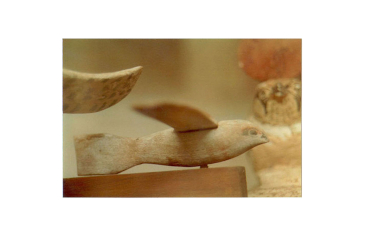 In 1898, an object that was thought to be a small wooden model of a bird was discovered in Egypt. The “unremarkable” find was tossed into a box marked “wooden bird models” and was rediscovered in more recent times. The Egyptian Ministry of Culture set up a special panel to study the object. As a result of that study, the object is on display at the Cairo Museum today as the centerpiece of a special exhibit. It is now officially labeled as a model airplane.
In 1898, an object that was thought to be a small wooden model of a bird was discovered in Egypt. The “unremarkable” find was tossed into a box marked “wooden bird models” and was rediscovered in more recent times. The Egyptian Ministry of Culture set up a special panel to study the object. As a result of that study, the object is on display at the Cairo Museum today as the centerpiece of a special exhibit. It is now officially labeled as a model airplane.
The plane’s design shows that it is an excellent glider, and with a small engine it could carry huge loads because of the unique design of its wings. This 2,200 year old model airplane had wings that angle slightly downward at the ends—exactly the same improved wing design that was first used in modern times on the supersonic Concorde!
Everyone agrees that humans have always been interested in flight. But now it appears that we creationists were right – we have always been smart enough to do something about our interest in flight as well!
Psalm 55 6-7
“And I said, Oh that I had wings like a dove! [for then] would I fly away, and be at rest. Lo, [then] would I wander far off, [and] remain in the wilderness.”
Prayer: Lord, help people understand that they are not simply glorified animals but are Your creations. Help us all to see that You made each one of us for a purpose, and help me to live for Your purpose. In Jesus’ Name. Amen.
Notes: Photo: Courtesy of Dawoudk and licensed under the Creative Commons Attribution-Share Alike 3.0 Unported license.
© 2024 Creation Moments. All rights reserved.
]]>
Fri, 19 Apr 2024 01:30:46 +0000https://creationmoment.wpengine.com/sermons/soberbio-esplndido-y-bello/Salmos 50:11
“Conozco todas las aves de los montes, y todo lo que se mueve en los campos me pertenece”.

Hay trece especies de un pequeño pájaro de plumas brillantes conocido como el maluro soberbio (ratona azul). Estos pájaros se encuentran en Australia y Nueva Guinea. Tan coloridas son sus plumas que las varias especies tienen el nombre de “ soberbio”, “espléndido” y “bello”. Sin embargo, aún más notable es el comportamiento inusual del pájaro.
Un macho que corteja a una hembra le traerá un pétalo de flor. Por lo general el pétalo es de su mismo color o es de uno que contrasta profundamente. Normalmente un pequeño pájaro vivaz con su cola erecta, cuando está cortejando baja su cola y se arrastra cerca del suelo. Al torcer su cuerpo de un lado al otro, infla las plumas de sus mejillas. Si la hembra acepta su cortejo, ella construye el nido sola, alineándolo con plumas brillantes de loros. Aunque se aparean para vivir, no son conocidos por su fidelidad a sus parejas. Cuando maduran, las hembras saldrán solas, pero los machos pueden quedarse con sus padres por un año o más. Su deber principal es el salvaguardar el nido familiar. Si el peligro se acerca al nido, el vigilante inflará sus alas, bajará su cola y se barrerá por la hierba seca, fingiendo ser un ratón. La idea es engañar al predador para que se aleje del nido.
La belleza y el comportamiento inusual de estos pequeños pájaros testifican de más que sólo la creatividad y del amor por la belleza de Dios. Nos recuerdan de la belleza que se perdió en la creación de Dios cuando se contaminó del pecado del hombre. Gracias a Dios algo de esa belleza que se perdió puede retornar a nuestras vidas a través del perdón de pecados que se encuentra en Cristo Jesús.
Oración: Amado Padre, Te agradezco por la belleza de Tu creación y por darme el perdón de los pecados en Cristo Jesús. Amén.
Notas: Historia Natural, 11/94, pp. 56-62, “Mujeriegos fieles”. Foto: Fairywren. Cortesía de benjamint444. Licenciado bajo los términos de la Licencia GNU Free Documentation 1.2.
© Momentos de la Creación 2024. Todos los derechos reservados.
]]>
This post originally appeared at https://creationmoments.com/feed/?post_type=sermons